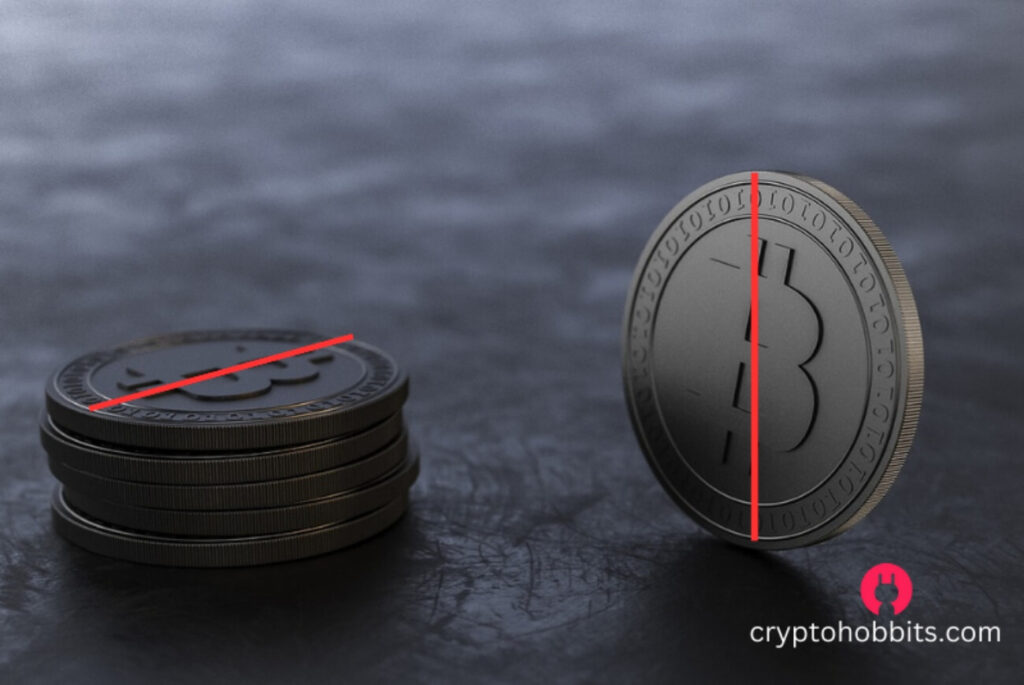Introduction
The last Bitcoin Halving (or halvening) at Block number 840,000 was April 19, 2024. That meant that Miners will now be receiving a Block Reward of 3.125 Bitcoin, 50 percent less than the previous 6.25 Bitcoins per Block rewards.

While there wasn’t much hype in the last Bitcoin Halving compared to the previous events, there were still a lot of misconceptions about the events you too may be guilty of.
This blog post will help address those misconceptions and reveal the truths you must know about the events.
What is Bitcoin Halving?

Bitcoin Halving is a regularly scheduled event on the bitcoin blockchain that happens every 210,000 blocks. The effect of Bitcoin Halving is that the Block Subsidy; which is amount of Bitcoin awarded to miners who successfully mine the next block reduced by half.
It takes about 10 minutes to successfully mine each block, So 210,000 blocks will take 2,100,000 or approximately 4 years for each mining event.
The first Bitcoin Block mining was on Jan. 3, 2009, since then, there has been 4 successive Bitcoin Halving – 2012, 2016, 2020 and 2024. Each time the mining subsidy or reward is reduced by half.
The initial Block Subsidy was 50 Bitcoins at inception.
| Halving Events | Block Reward/Subsidy | Block Number | Year (Approximate) |
| First | 25 Bitcoins | 210,000 | 2012 |
| Second | 12.5 Bitcoins | 420,000 | 2016 |
| Third | 6.25 Bitcoins | 630,000 | 2020 |
| Fourth | 3.125 Bitcoins | 840.000 | 2024 |
| Fifth | 1.5625 Bitcoins | 1,050,000 | 2028 |
Common Misconceptions About Bitcoin Having
Some common misconceptions of Bitcoin Halving and the truth about each of them are as follows;
Myth 1: Bitcoin Death Spiral
This Bitcoin halving myth describes Bitcoin mining as becoming an unprofitable ventures after Bitcoin Halving event. The idea is that miners will still have to pay the same cost for energy consumption mining Bitcoins, while at the same time receiving halve the rewards (assuming the Bitcoin price remain the same).
Here is the dilemma, the Bitcoin difficulty is adjusted after mining every 2016 blocks (takes about 2 weeks). If miners suddenly become unprofitable after each halving, and all decide to turn off their equipment, there will not be enough computational power to mine the next block.

If you cannot mine the next block, or reach the next difficulty adjustment, more miners drop out, making it even worse. This is what is described as the Bitcoin Death Spiral.
We have had 4 successful halving events and this did not happen. The simple reason is that miners across the world are faced with different mining technology and economics. All miners are NOT the same, different metrics determine their profitability.
Energy cost (electricity cost) vary widely, some miners use much more efficient miners, locacion. labor cost vary etc. So there will be miner who will still remain profitable to mine the next block.
Basic mathematics does not also support the Bitcoin Death Spiral, even if as many as half the number of miners globally turn off their equipment, it will only mean that it takes twice the time (20 minutes) to mine the next block. This is not a big deal as in the Difficulty will eventually be adjusted after mining 2016 blocks.
Myth 2: Bitcoin Halving Guarantees a Price Surge
Bitcoin has always been a speculative asset, so the Supply and Demand Dynamics will affect the price of Bitcoin. The myth is that Halving results in less amount of “New Bitcoins” and so the Bitcoin Halving Guarantee a price surge.
That is, if demands remains constant, and supply is halved, then the price of Bitcoin is guaranteed to surge.
Not all data support this in reality. The Bitcoin price before the last halving was about $68,000 (in April 2024), but after the Halving, we had Bitcoin price plummeting in the following weeks, and went as low as $56,000.
There are no guarantees of price surge after Bitcoin Halving, at least, not in the short or mid term. Not all miner sell their Bitcoins sell their Bitcoin immediately after mining, making the supply dynamics to have less impact on prices.
The bulk amount of Bitcoins are sitting in dormant wallets and those tend to move the market more (in any direction) than less than the current emission rate (about 0.83 percent / annum of supply).
Myth 3: Miners Will Abandon Bitcoin After Halving
This is similar to the Bitcoin Death Spiral, that miners will abandon Bitcoin mining after halving. While it is true that some miner will initially shutdown after halving event due to the high difficulty.
A good number will return to mining after the Difficulty adjustment (drops). This time however, only the most efficient miners will keep running their mining operations. So no need to worry if your equipment are very efficient (comparatively) and your electricity bills are at competitive rates.
This kind of dynamics ensures that Bitcoin mining efficient.
When Is the Next Halving
The next Bitcoin halving event is 2028 at block number 1,050,000. The actual day may vary depending on the adjustments in the difficulty level.
Most of the Countdown clocks online at the moment may be off by several days. These countdowns will become much more accurate as we mine more blocks and the subsequent difficulty levels are known.
Conclusion
Bitcoin halving is programmed to take place after every 210,000 blocks mined, the common myths of grounding the network to a halt, miners switching off their equipment or that prices are guaranteed to surge after Bitcoin Halving are simply not true.
There are more factors that influence Bitcoin prices, halving may not always represent a major bump. Halving impact rewards but it does not lead to miners becoming obsolete.



